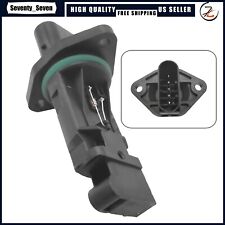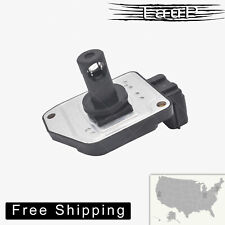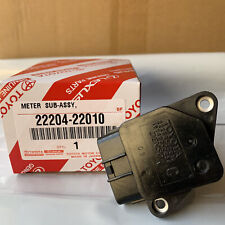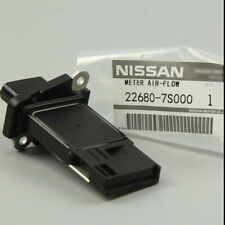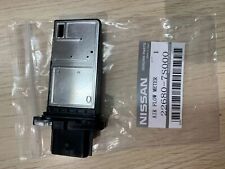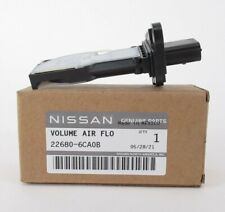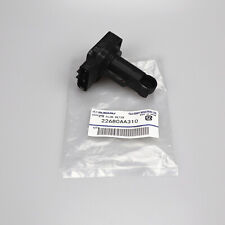Top 10 Luxury Cars That Pollute the Least
You don’t need to buy a small and cheap car to drive a vehicle that’s kind to the environment. What comes out of a car”s tailpipe is just as important as what goes into the fuel tank.
Our two least-polluting lists, one for luxury vehicles and one for non-luxury vehicles, are based on examining each model’s Air Pollution Score and Carbon Footprint ratings as determined by the EPA.
The Air Pollution Score represents the amount of health-damaging and smog-forming airborne pollutants a vehicle emits. Among these are hydrocarbons, nitrogen oxide, particulate matter, carbon monoxide, and formaldehyde. Scoring is based on a 10-point scale, with 10 representing a zero-emissions vehicle, meaning higher numbers are better.
Click through for the list of Top 10 Luxury Cars That Pollute the Least.
Related Stories:
See What Makes the Acura MDX So Upscale
The BMW Made for the Off-Road
An American Classic: Ford Mustang
The Soon to be Classic: X-Type
The Sleek and Sporty A6
Top 10 Luxury Cars That Pollute the Least – (with annual tons of greenhouse-gas emissions; lower is better)
10. Infiniti G37 Coupe – Carbon Footprint: 9.2 annual tons
9. (tie) Mercedes-Benz C300 – Carbon Footprint: 8.7 annual tons
9. (tie) BMW 528i – Carbon Footprint: 8.7 annual tons
8. (tie) Volvo S60 – Carbon Footprint: 8.3 annual tons
8. (tie) Lincoln MKZ – Carbon Footprint: 8.3 annual tons
8. (tie) Lexus ES 350/GS 350 – Carbon Footprint: 8.3 annual tons
8. (tie) BMW 128i; BMW 328i; BMW Z4 3.0si – Carbon Footprint: 8.3 annual tons
7. (tie) Volvo C30 T5 – Carbon Footprint: 8.0 annual tons
7. (tie) Volvo S40 2.4i/V50 2.4i – Carbon Footprint: 8.0 annual tons
7. (tie) Porsche Boxster/Cayman – Carbon Footprint: 8.0 annual tons
6. (tie) Lexus IS 250 – Carbon Footprint: 7.7 annual tons
6. (tie) Audi A4 2.0T – Carbon Footprint: 7.7 annual tons
5. Audi A3 – Carbon Footprint: 7.3 annual tons
4. Audi TT – Carbon Footprint: 7.1 annual tons
3. Lexus LS 600h L – Carbon Footprint: 8.7 annual tons
2. Lexus GS 450h – Carbon Footprint: 8.0 annual tons
1. Lexus RX 400h – Carbon Footprint: 7.3 annual tons
View Slideshow
Top 10 Luxury Cars That Pollute the Least
You don’t need to buy a small and cheap car to drive a vehicle that’s kind to the environment.
by Jim Gorzelany
ForbesAutos.com
What comes out of a car”s tailpipe is just as important as what goes into the fuel tank.
Fuel economy gets lots of play because of rising fuel costs, but exhaust emissions from motor vehicles have a huge impact on the planet and people”s health.
Internal combustion engines emit a host of harmful gases as a result of burning fossil fuels like gasoline, diesel, and ethanol. These highly toxic smog-forming emissions include carbon monoxide, formaldehyde, and other particulate matter that create the dark smoke seen billowing from diesel trucks and the gray haze hanging over large cities.
In addition to those pollutants, which are harmful to human health, vehicles also emit what the U.S. Environmental Protection Agency calls “greenhouse gases,” with carbon dioxide (CO2) being the main offender. Motor vehicles are the largest source of CO2 emissions, accounting for 51 percent of total emissions, according to the EPA.
Burning one gallon of gasoline emits 20 pounds of CO2.
CO2 and other greenhouse gases aren”t as immediately harmful to plants and animals, but scientists believe that they are causing global climate change as they collect in the earth”s atmosphere.
We have assembled a list of luxury and non-luxury vehicles that emit the fewest pollutants according to the EPA.
Hybrids fare well in both rankings. Three Lexus hybrids top our list of luxury vehicles that pollute the least. Click here for the full list.
But with hybrids often costing more than their conventional counterparts, is it worth it to shell out extra green to get a greener car?
At least 1,049 people think so.
That’s how many affluent motorists took delivery of the $104,000 Lexus LS 600h L sedan in 2007. This model is the most expensive hybrid available and ranks third on our list of the 10 least-polluting luxury vehicles, behind two other hybrid Lexus models, the GS 450h sedan and RX 400h SUV, which grab second and first place, respectively.
The large and ostentatious Lexus LS 600h L, with its potent V8 engine and electric-motor powertrain, certainly isn”t a poster child for eco-friendliness. Especially considering that it averages only 2 miles per gallon better than the conventionally powered LS 460, which gets an estimated 19 mpg overall.
“Lexus hybrid buyers are very interested in comparative fuel economy and emissions, but they are not willing to sacrifice performance or luxury,” says Greg Thome, Lexus” communications administrator. “We’re appealing to a buyer that, in many cases, might not have seriously considered a hybrid in the past “” we’re finding that LS 600h L buyers are cross shopping $100,000 models from Mercedes-Benz, BMW, and Audi.”
None of the competing sedans from other luxury automakers are currently offered as hybrids, but that”s about to change. Audi, BMW, Cadillac, Lexus, Mercedes-Benz, and Porsche have all announced plans to unveil hybrids, some as soon as 2009.
For now, though, Lexus is the only one offering luxury hybrids, and that”s why it took the top three spots in our list of luxury vehicles that pollute the least.
Looking at tailpipe emissions alone, hybrids have a clear and immediate advantage. The hybrid LS 600h L emits 70 percent fewer pollutants than the gasoline-only LS 460, and 90 percent fewer pollutants than similarly powered sedans from BMW and Mercedes-Benz, according to Lexus.
The main reason hybrids are so superior to conventional combustion engines when it comes to polluting is that a hybrids can automatically shut down their combustion engines in stop-and-go traffic when they”re at their least efficient and polluting the most. Some can even drive at low speeds using only battery power.
For those who shun hybrids, there are certain things to look for in conventionally powered vehicles that can dramatically reduce emissions “” smaller, more efficient combustion engines, for one.
After the hybrids, cars with four- and five-cylinder engines come next on the list of luxury vehicles that pollute the least “” cars like the Audi TT (fourth place), Volvo S40 (tied for seventh), and BMW 128i (tied for eighth) also made the cut.
Surprisingly, several sports cars “” which tend to favor performance over efficiency “” made the luxury-vehicle list, including the Porsche Boxster and Cayman in seventh place, the BMW Z4 3.0si, which tied for eighth place, and the Infiniti G37 Coupe, in tenth.
According to the J.D. Power and Associates 2007 Avoider Study, which surveyed why consumers favored certain vehicles, while gas mileage played a prominent role in vehicle purchasing decisions, wanting an environmentally friendly vehicle was one of the least-cited reasons for choosing a particular model.
But if the industry’s interest in eco-friendliness continues to grow, more and more models will likely be available as hybrids, and more consumers will be buying them. J.D. Power expects over 1 million hybrid vehicles to be sold in the U.S. by 2012. By then, there will be more than 80 hybrid models to choose from, according to Omotoso, from small cars to SUVs to pickup trucks, and everything in between.
“Environmental consciousness tends to come from wealthier, college educated people,” Omotoso says. “But as terms like “˜global warming,” “˜dependence on foreign oil,” and “˜carbon footprint” become more common, more and more consumers at all income levels will factor in the environment in their vehicle purchase decision.”
You don”t have to pick the most-expensive hybrid or the smallest car on the lot to do your part. “Even marginal improvements in fuel economy can go a long way,” says Catherine Milbourn, press officer for the Environmental Protection Agency.
For instance, two visually identical cars that use the same engines can have different emissions outputs simply based on one model being all-wheel drive, and the other being rear-wheel drive. The rear-drive BMW 328i ties for eighth place on our list, with a Carbon Footprint of 8.3 annual tons of greenhouse gas emissions. The all-wheel-drive 328xi did not make out list because it gets worse fuel economy and emits 9.2 tons of greenhouse gases annually.
Milbourn suggests environmentally conscious consumers check the fuel economy and emissions ratings for all vehicles under consideration, as posted on the vehicle-related websites the agency maintains in conjunction with the Department of Energy: http://www.fueleconomy.gov/, and www.epa.gov/greenvehicles.
Non-Luxury Vehicles
With luxury status out of the equation, hybrids still figure prominently when it comes to tailpipe emissions. Click here for the full list.
Small hybrid cars like the Toyota Prius and Honda Civic Hybrid rated the highest on the non-luxury list, but a few hybrid SUVs, like the Ford Escape Hybrid, which tied for fourth place, and Toyota Highlander Hybrid, in fifth, also placed well.
Hybrids are the top choice for low emissions today, but a few years from now, a similar ranking based on tailpipe emissions might turn up a list of all-electric vehicles.
That hypothetical list might contain the $98,000 Tesla Roadster, an all-electric sports car slated to go on sale this spring. Another potential contender is the Fisker Karma, an $80,000 four-door hybrid luxury sedan that can be plugged in and recharged, traveling up to 50 miles on emissions-free electric power.
But until those vehicles and others like them come out, choosing a hybrid is the easiest way to pollute the least.
About Our Rankings
Our two least-polluting lists, one for luxury vehicles and one for non-luxury vehicles, are based on examining each model’s Air Pollution Score and Carbon Footprint ratings as determined by the EPA.
The Air Pollution Score represents the amount of health-damaging and smog-forming airborne pollutants a vehicle emits. Among these are hydrocarbons, nitrogen oxide, particulate matter, carbon monoxide, and formaldehyde. Scoring is based on a 10-point scale, with 10 representing a zero-emissions vehicle, meaning higher numbers are better.
Carbon Footprint ratings estimate the tons of greenhouse gases each vehicle generates per year based on 15,000 miles of driving. These emissions include carbon dioxide, nitrous oxide, methane, and other compounds believed to be major contributors to global warming. One gallon of gasoline converts to 20 pounds of CO2 emitted into the atmosphere.
The EPA”s ratings cited in our lists assume emissions generated not just by burning fuel while driving, but from fuel production and refining as well. Scoring is expressed in the number of tons of greenhouse gases produced each year, meaning lower scores are better.
The EPA considers a vehicle’s Air Pollution Score to be more important because it is directly related to air quality, and thus has an immediate impact on human health. Therefore, we use it as the basis for our ranking. Carbon Footprint rating is included for every vehicle but was primarily used to break ties in our rankings.
It Gets Complicated
Many of the lowest-emission versions of some models aren”t available in all 50 states. Some specially certified “super low-emissions” (SULEV) or “partial-zero emissions” (PZEV) vehicles “” which are rated at 9 and 9.5 on the Air Pollution scale, respectively “” are offered only in California and the handful of other states that adhere to California’s stricter air-pollution standards. They include Arizona, Connecticut, Florida, Maine, Maryland, Massachusetts, New Jersey, New Mexico, New York, Oregon, Pennsylvania, Rhode Island, Vermont, and Washington.
However, there are instances when a manufacturer sells the same version of the car that qualifies as SULEV or ULEV in other states and doesn”t bother going through the bureaucracy of certifying it as such in the states that don”t require it. In those instances, we use the highest EPA emissions ratings, being that, more than likely, consumers can purchase the SULEV- or ULEV-equivalent version of the vehicle in the states that don”t require this rating.
But in instances where a SULEV or ULEV vehicle is only sold in California and the other states mentioned above that have adopted its emissions regulations, we use the lower emissions score.
The best way to tell if a vehicle is SULEV or ULEV compliant even though it isn”t rated as such in the state where you live is to check what the EPA calls the “Underhood ID” to see if it matches that of the variant that officially qualifies as SULEV or ULEV.
Go to the EPA”s site to read more about this topic.
Finally, to qualify for luxury status, a vehicle must be made by a company commonly regarded as a luxury or premium automotive manufacturer.




